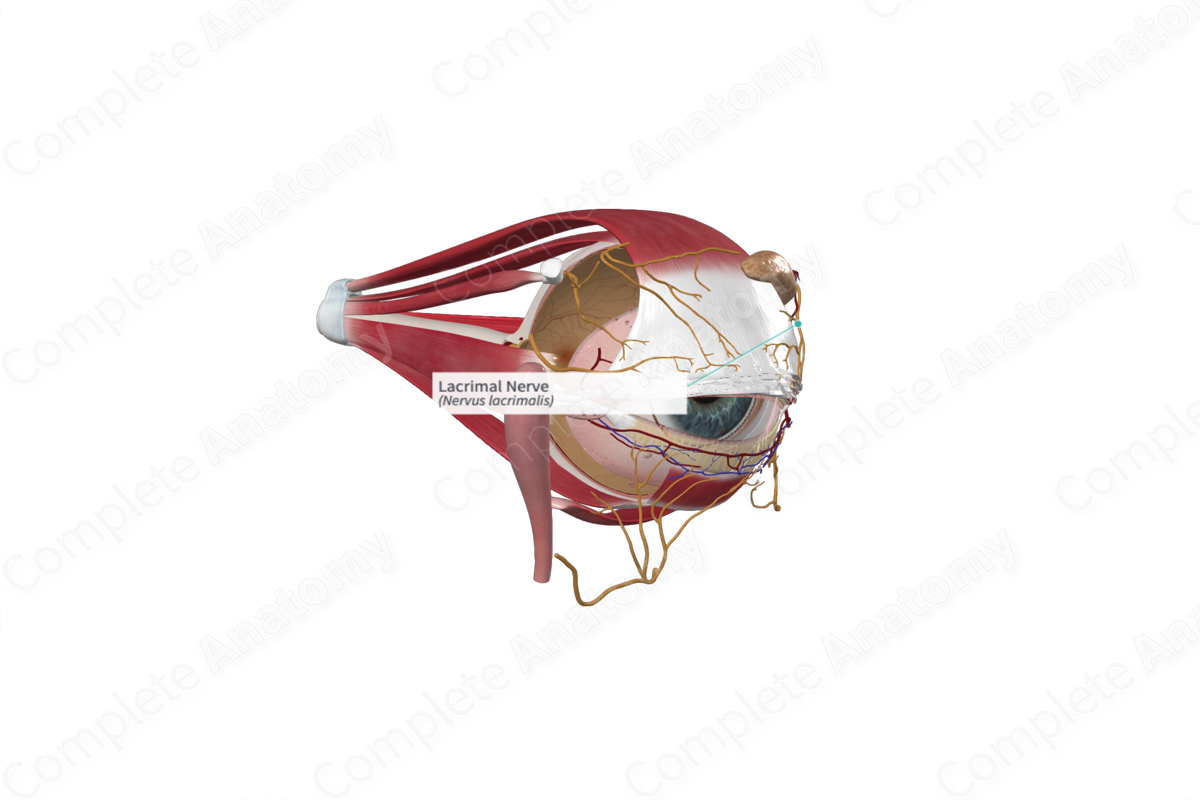
Quick Facts
Origin: Ophthalmic nerve.
Course: Runs from the superior orbital fissure along the superior lateral wall of the orbit, superior to the lateral rectus muscle and out towards the lacrimal gland.
Branches: Lacrimal and palpebral branches, also receives a communicating branch with zygomatic nerve.
Supply: Conveys general sensation from the lacrimal gland, skin, and conjunctiva of the upper lateral eyelid and lateral eye.
Origin
The lacrimal nerve is a branch of the ophthalmic nerve that originates just proximal to or within the superior orbital fissure.
Course
The lacrimal nerve runs within the upper aspect of the superior orbital fissure, passing anterolaterally on the superolateral wall of the orbit, superior to the lateral rectus muscle. It is usually accompanied by the lacrimal artery. The nerve eventually enters the lacrimal gland, before emerging from the superolateral aspect of the orbit into the skin and conjunctiva of the lateral aspect of the upper eyelid, and adjacent skin of the lateral corner of the eye, forehead, and scalp.
Branches
The lacrimal nerve gives glandular and palpebral branches. The glandular branch carries general sensory information from the lacrimal gland. It is joined by the palpebral branch passing from the upper eyelid to form the lacrimal nerve.
Supplied Structures
The sensory fibers of the lacrimal nerve convey sensation from the lacrimal gland via its glandular branch, as well as the skin and conjunctiva of the upper lateral eyelid and lateral eye via its palpebral branch. The parasympathetic fibers supply the lacrimal gland.
Shortly before reaching the lacrimal gland, the lacrimal nerve may be joined by postganglionic parasympathetic fibers originating in the pterygopalatine ganglion. They receive their preganglionic fibers from the greater petrosal nerve (CN VII) via the nerve of the pterygopalatine canal. These fibers travel with the lacrimal nerve, but are not technically considered part of the lacrimal nerve.



